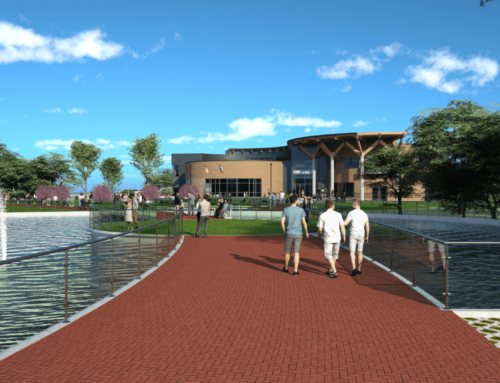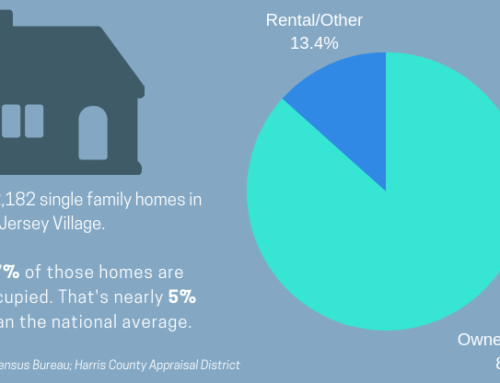A plea I hear from citizens on a routine basis is the need for updates to the visual appeal of our city. If you look through the Jersey Village Comprehensive Plan adopted in February 2016, there are numerous items focused on the aesthetics of our city, particularly when it comes to updated facilities. In the nearly two years I have been on city council, we have voted unanimously to push forward on many of these items, including updates to city entrances, and a new golf course convention center and clubhouse. These projects are currently in design and/or engineering phases and will break ground this year.
In addition, the city has been hard at work to encourage economic development in Jersey Village, with an aim to draw investment into retail businesses in the U.S. Highway 290 corridor. New investment will, of course, help to alleviate some of the blight and aged properties along the feeder. Slowly we are beginning to witness some of the fruits of this effort, and we should continue to see improvement in this area.
Perhaps one of the most significant issues from a visual improvement and facility update perspective, as well as historically one of the most contentious, is the construction of a new city hall.
We’re all too familiar with the outside appearance of the building. I took the photo above just a few months ago. For a community striving to attract new businesses and encourage young families to move into Jersey Village, the building is uninspiring, to say the least.
If you take a walk through its halls and into its offices, however, the situation is far more problematic.
When I have spoken with city employees about their experience in the building, they’re quite candid in providing examples of problems with the building. Vents in various parts of the building show signs of mold and mildew from an aging HVAC system and years of problems keeping moisture out of the building. Using a space heater, microwave, or any other modern electrical appliance often causes circuit breakers to trip due to the inadequacy of the electrical system.
In fact, some may recall that during a city council meeting last year, the lights went out several times. This both caused the live stream of the meeting to fail and temporary lights were run in the civic center to ensure we had backups in case the lights continued to have problems.
The Jersey Village Comprehensive Plan, compiled primarily by a citizen committee, perhaps summarizes the situation best (pages 8.7 and 8.8):
[I]t was determined that the current buildings comprising City Hall should ultimately be replaced. The severity and extent of water penetration throughout the building, and the potential it creates for the growth of mold within the building, is highly concerning. The electrical system within the building is highly exposed and likely to be affected by water intrusion. Furthermore, the electrical system itself is both unattractive and ineffective—it is often plagued by numerous shorts, both witnessed and reported by users. Finishes, fixtures, doors, windows, etc. are often broken, in disrepair, or show wear beyond what can be addressed through simple repairs. The
basic functionality of the space is poor; it is clear that the City Hall buildings are being used outside their original conceived purpose. Circulation around the buildings is confusing and not at all intuitive, offices are configured poorly, and storage space is inadequate. Based on the cost and nature of the repairs, maintenance, replacement, etc. that would be necessary to make the building functional again, it is recommended that the entire building be replaced in the immediate future. Any portion of the building worth preserving is not extensive enough to prove cost effective.
In fact, the Comprehensive Planning Advisory Committee not only recommended replacement of the building, they thought it was critical enough to the continued development of Jersey Village that they included it as one of the “Priority Recommendations” (page 9.10).
Replacement of this building is not our top priority — without a doubt ensuring we continue to maintain emergency services in top condition and implement flood mitigation infrastructure in a timely manner are our top priorities. It is, however, apparent that the city’s history of approaching city hall with a “penny wise, pound foolish” approach has caught up with us.
If we expect to continue to provide our citizens with the high level of service they have come to expect from our city staff in the future, it will become increasingly difficult to do so asking them to work in a building like this.
This is the start of a long discussion on the details, such as timing, size, features, and location. But before we can approach those issues, it’s important that we reach the conclusion, together as a community, that a new city hall building is not a “nice to have”. It’s a long overdue investment in our city.










